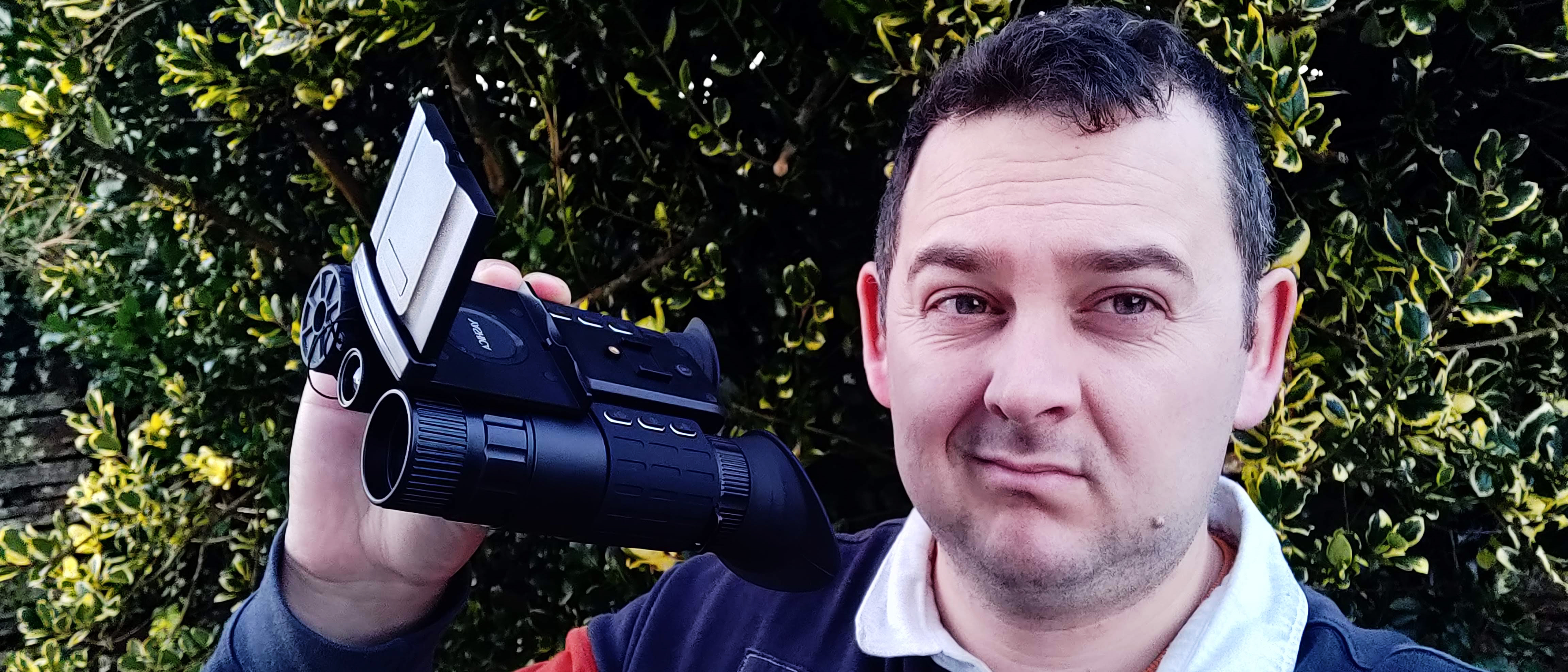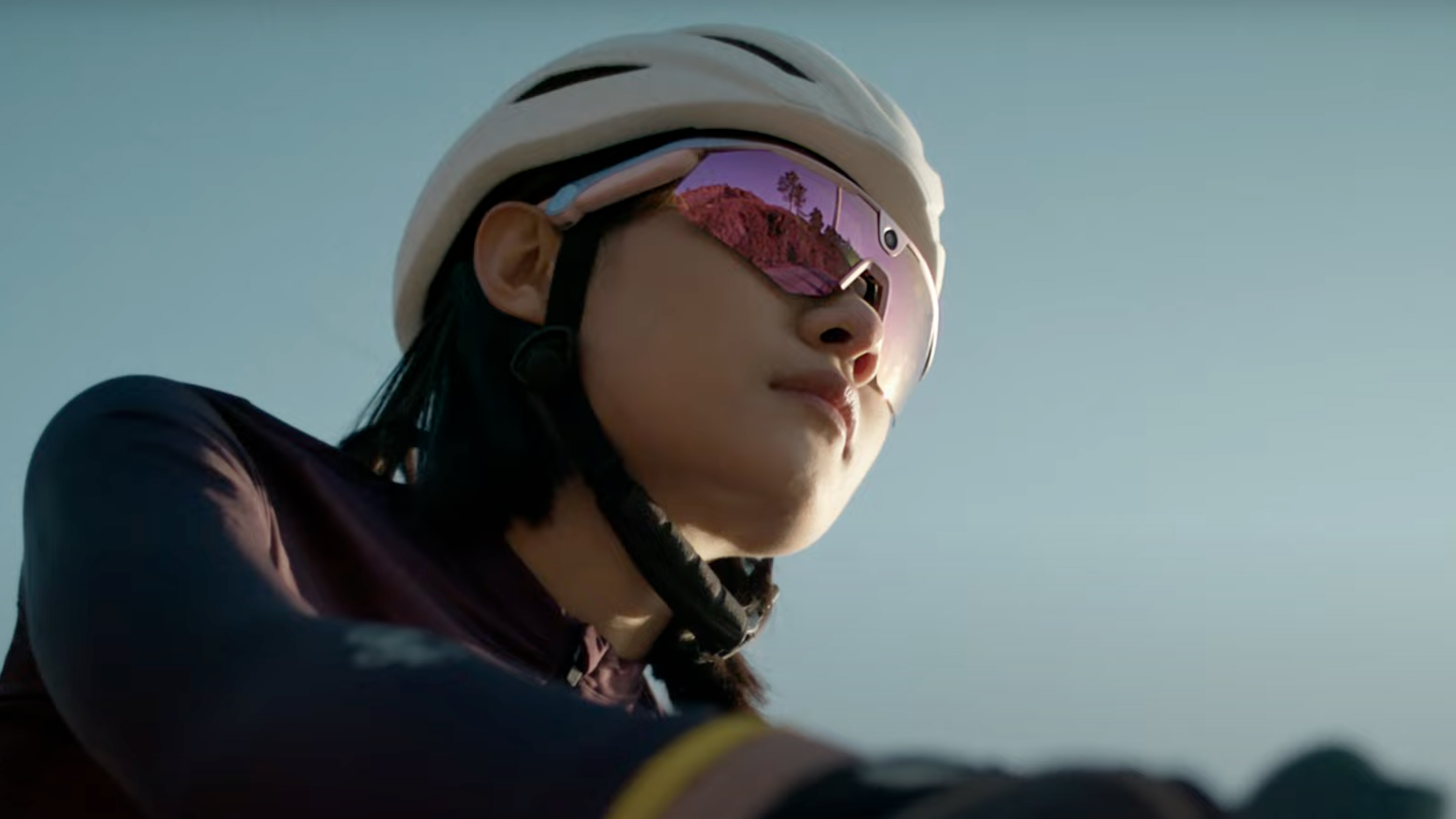Digital Camera World Verdict
The Yashica Explorer has some attractive features, but its low-resolution viewing and subpar build hold it back. While easy to use and suitable for beginners, better alternatives exist at the same price point for those needing higher performance and durability. The Explorer shows potential but falls short for serious users.
Pros
- +
User-friendly design
- +
simple controls
- +
"ok" 4K video
Cons
- -
build quality is flawed
- -
"Porthole" viewing is weird
- -
falls short of hype
Why you can trust Digital Camera World
The Yashica Explorer marks an interesting entry into the night vision market, especially for a brand like Yashica that has a storied history but has been off the radar for a while.
This product aims to bring cutting-edge features to outdoor enthusiasts, security personnel, and anyone requiring reliable night vision at a competitive price point. However, after spending time with the device, it's clear that while Yashica is on the right track, the Explorer doesn’t quite hit the mark in key areas. There are better alternatives at this price range, especially for those who prioritize image quality and durability.
Yashica Explorer: Specifications
Lens Aperture: F/1.0
Sensor: CMOS 1/2.9”
Replaceable Battery: 3500mAh
IP Certification: IP65
Image Resolution: 48MP/40MP/30MP/25MP/20MP/10MP/8MP/5MP/3MP
Video Resolution: 4K/1080P/720P
Weight with Battery: 430g
IR Levels: 3 levels
Charging Time: 4.5 hours (100%), 3.5 hours (80%)
Digital Zoom: 8 levels
Optical Zoom: 3x (fixed)
Yashica Explorer: Design & Handling
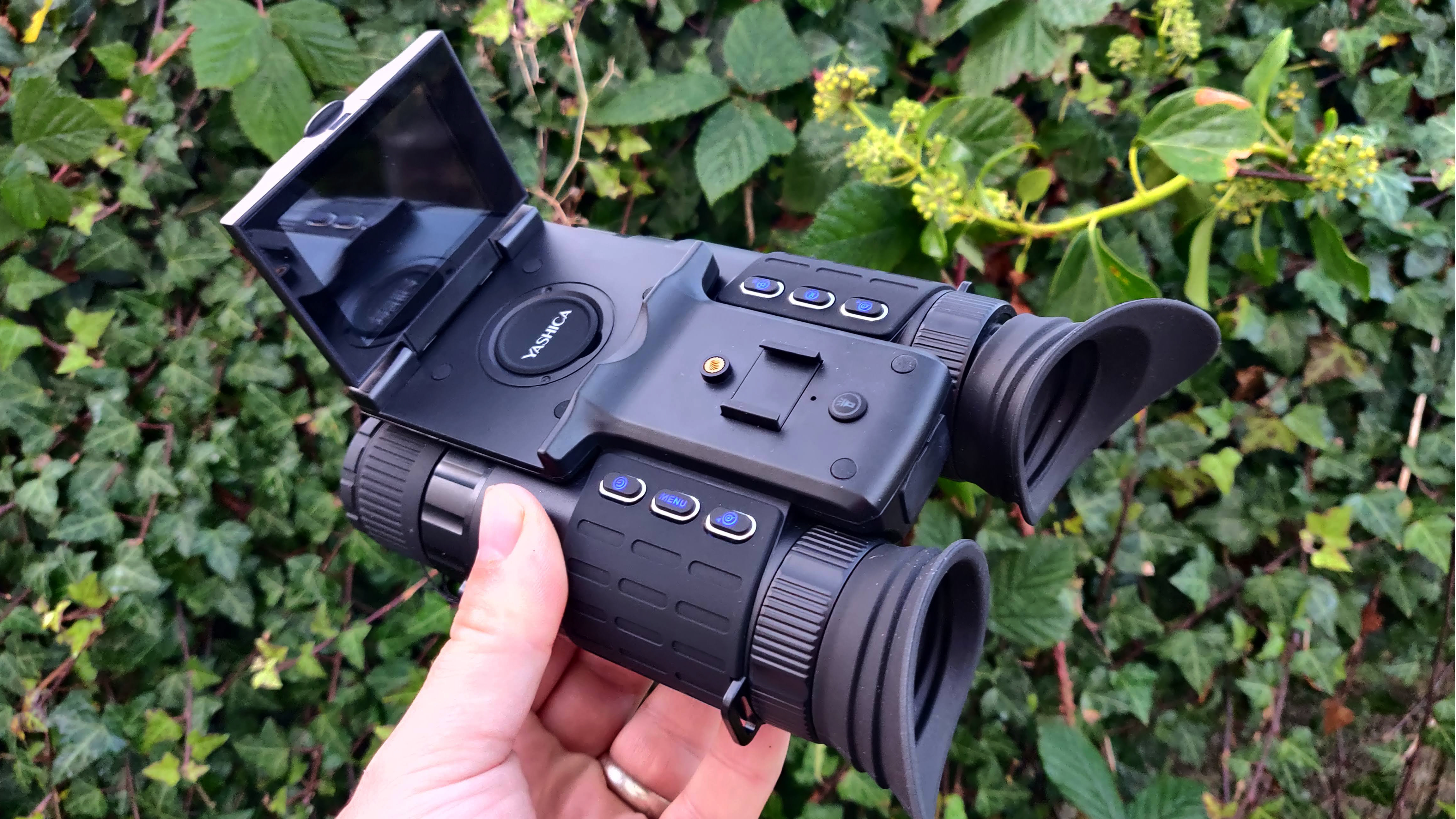
One of the Explorer's advertised strengths is its lightweight construction, which makes it suitable for extended use. Weighing in at just 430g, the device feels comfortable in the hand and doesn’t induce the neck strain associated with heavier night vision devices. This is a big win for users who need to wear or carry the device for long periods.
However, the lightweight design comes at a cost. Upon closer inspection, the overall build quality feels subpar, especially when considering Yashica's reputation. The plastic casing and overall construction give the impression that the device might not withstand rigorous use in the field.
It’s fine for casual outings or lighter tasks, like bird watching from a hide, but I have concerns about its longevity under more demanding conditions like hiking or continuous surveillance work. If you're expecting something rugged that can take a beating, the Explorer might not live up to those expectations.
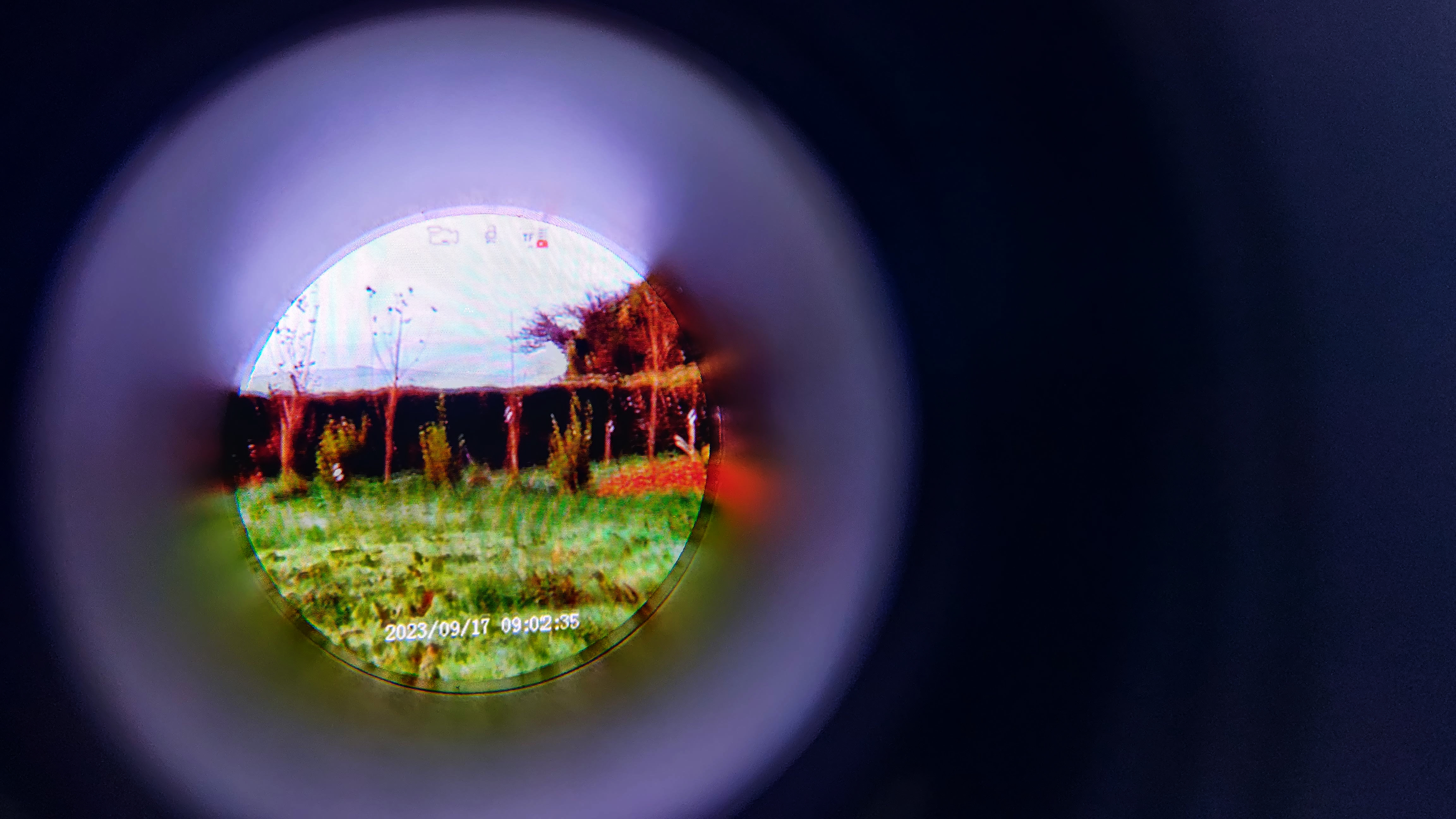
One of the biggest disappointments I encountered with the Yashica Explorer is the quality of the viewing experience. Despite boasting an impressive range of video resolutions— 4K, 1080p, and 720p — the live viewing experience through the device falls short. The EVF (Electronic Viewfinder) is of notably low resolution, which hampers the device's ability to deliver the kind of crisp, detailed image quality that users would expect based on the advertised specs.
For someone like me, who has reviewed and used hundreds of night vision devices over the years, this was a significant letdown.
In practice, when trying to observe and track objects like birds or wildlife, I found it difficult to focus and lock onto subjects due to the device’s low-res EVF. While the IR setting improved the viewing quality slightly compared to the color mode, it still wasn’t enough to elevate the Explorer to the level of competing devices in this price range. In fast-moving or low-light scenarios, the clarity just wasn’t there. For users looking for precision and detail, this will be a major sticking point.
Yashica Explorer: Performance
Additionally, Yashica’s decision to go with a circular "porthole-like" viewing design is puzzling. This is something I’ve never encountered before in all my experience with binoculars and night vision goggles, and frankly, I found it awkward and less practical than the more common rectangular displays. The circular field of view felt restrictive and didn’t provide the expansive, immersive visual experience I’m used to with competing products. For many users, this could be a dealbreaker, as it detracts from the overall usability of the device.
Despite its shortcomings in viewing quality, the Yashica Explorer does shine in terms of usability. One of the device’s most redeeming features is its intuitive user interface, which makes it easy for just about anyone to pick up and use with minimal effort. Whether you’re tech-savvy or a complete novice, the Explorer is designed to get you up and running in no time
Switching between viewing angles is made simple with the OLED screen, and accessing features like photo and video capture is straightforward. The device is as close to "plug-and-play" as it gets in the world of night vision, which is ideal for users who don’t want to spend hours reading manuals or learning complex controls.
For beginner users or those who prioritize simplicity, this is a big advantage. However, ease of use alone isn’t enough to offset the more critical flaws in performance and build quality.
Another area where the Explorer from Yashica does perform well is battery life. Equipped with a removable 3500mAh battery, the device can run for up to 11 hours with the IR off, which is more than enough for most outdoor excursions or surveillance sessions.
The ability to carry spare batteries adds to its appeal for extended use in the field. Charging times are also reasonable, with a full charge taking around 4.5 hours, and an 80% charge in 3.5 hours.
The lightweight design, as mentioned earlier, makes it easy to carry, and the device is compact enough to be helmet-mounted if needed - which mount comes in the box. But again, the compromise here is durability. If you’re someone who values portability over ruggedness, the Explorer may suit your needs. But for those who need something more robust, the lightweight construction might feel more like a downside.
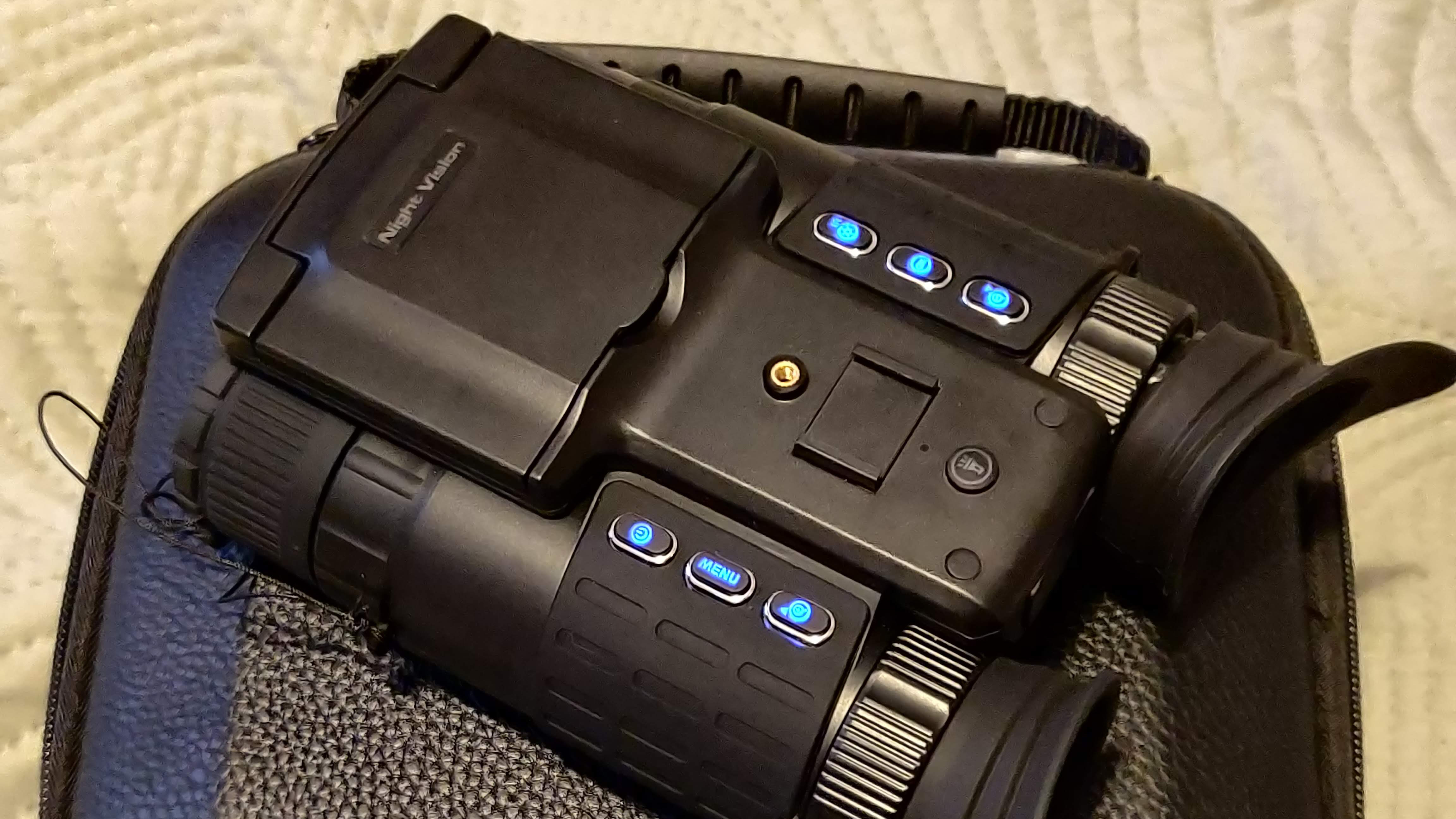
Yashica Explorer: Final Verdict
The Yashica Explorer is a decent attempt at offering an affordable, feature-packed night vision device, but it falls short in several key areas. While it’s certainly capable of basic observation tasks and casual outdoor use, it struggles to compete with rival devices that offer better build quality and a superior viewing experience at a similar price point.
For those who are new to night vision and want something easy to use, the Yashica Explorer could be an option. However, at a price of $389.99, it becomes harder to recommend given the availability of better-performing alternatives in this range.
Overall, the Yashica Explorer is an "okay" device that does some things well but ultimately doesn’t live up to its potential. For more serious users or professionals, there are other options on the market that will deliver a far better experience at a similar or slightly higher price. If Yashica wants to make a serious comeback in the night vision space, they’ll need to address these critical flaws in future iterations
✅ Buy this if...
- You want user-friendly controls
- You want video and photo capabilities
- You don't mind buying into the brand
🚫 Don't buy this if...
- You want a great EVF
- You want outstanding build quality
- You don't like the unconventional
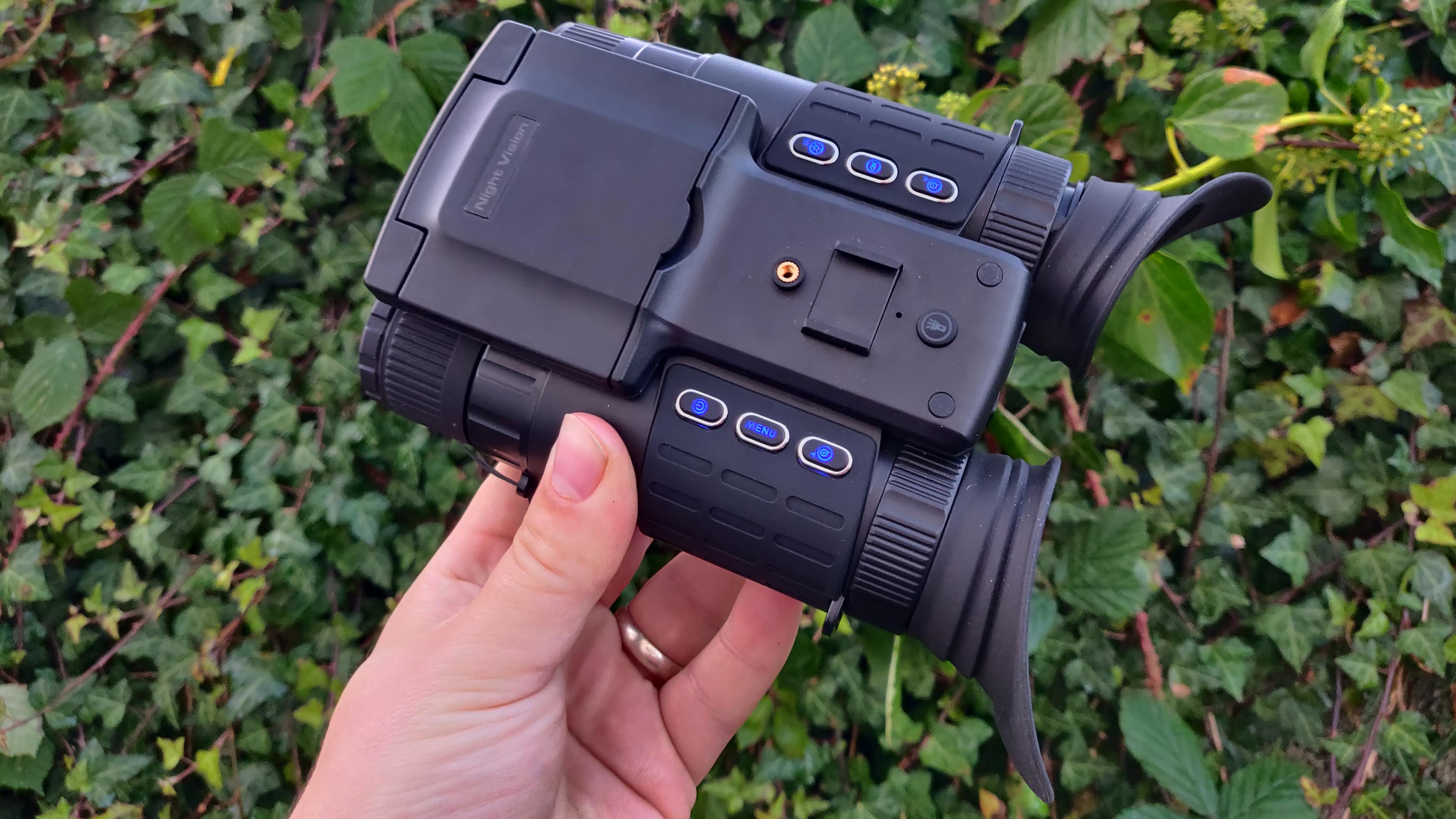
You might also like...
With its solid construction and slightly bulky size, these digital binoculars from Sigweis are reasonably priced. The ability to record Full HD footage both in night vision and in the daytime via color for up to 2 hours and 38 minutes is extremely useful, and having 9,999 3MP images at your disposal means you will never run out of capturing your greatest discoveries. If size and weight are not an issue I would say the Sigweis offers better features over its competitors within its price bracket.
With its lightweight construction, albite slightly bulky size the NightFox Corsac is reasonably priced at $149.99 / £149.99 / AU $251 its ability to record Full HD footage both in night vision mode and daytime color is extremely useful. For the price and the functions available, the NighFox Corsac are very capable digital night vision binoculars that will deliver good results to around 150 meters, with the image being slightly soft at 180m. Yet, you will still be able to make out sheep, deer, rabbits, and other forms of wildlife.
Read full review

For nearly two decades Sebastian's work has been published internationally. Originally specializing in Equestrianism, his visuals have been used by the leading names in the equestrian industry such as The Fédération Equestre Internationale (FEI), The Jockey Club, Horse & Hound, and many more for various advertising campaigns, books, and pre/post-event highlights.
He is a Fellow of the Royal Society of Arts, holds a Foundation Degree in Equitation Science, and holds a Master of Arts in Publishing. He is a member of Nikon NPS and has been a Nikon user since his film days using a Nikon F5. He saw the digital transition with Nikon's D series cameras and is still, to this day, the youngest member to be elected into BEWA, the British Equestrian Writers' Association.
He is familiar with and shows great interest in 35mm, medium, and large-format photography, using products by Leica, Phase One, Hasselblad, Alpa, and Sinar. Sebastian has also used many cinema cameras from Sony, RED, ARRI, and everything in between. He now spends his spare time using his trusted Leica M-E or Leica M2, shooting Street/Documentary photography as he sees it, usually in Black and White.
